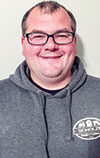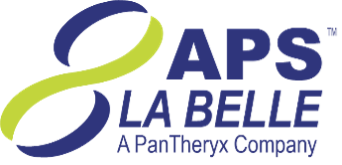In the time since I wrote my last post, in which I referenced a dairy being built in Indonesia and the signals it is sending to the market, I have had the opportunity to host on our farm two gentlemen who are tasked with trying to put together that dairy.
This experience has made it even more obvious that as an industry we are missing many opportunities in the global market due to how we process milk. To further illustrate my point, I will describe some of the things they are doing in an attempt to produce milk, and you will see that there is no reason we cannot provide the ingredients needed for their products.
The first amazing thing they are doing is attempting to develop an industry where one doesn’t exist. In a world where the U.S. is practically drowning in excess milk, a tropical island country where no dairy economy exists has decided that it is less expensive to try to create an industry versus working with processors out there to get the needed ingredients. Shame on U.S. processors, dairy product promotion and dairy farmers for totally missing the boat on this.
Until visiting with them I didn’t fully understand the magnitude of this undertaking.
Challenge number one: There is no institutional knowledge of any part of the industry. They didn’t know what bulk tanks were, so they attempted to build milk storage tanks. They didn’t work, so they were discarded, and the gentlemen tried again at significant cost to the company.
Barn design knowledge is nonexistent, so after a barn was completed, concrete stalls were torn out and reinstalled – there again an incredible expense. There are many other examples of logistical nightmares, such as no equipment manufacturers, no service techs, no vets, etc., that are not inexpensive to get around but are deemed easier than working with the global dairy industry.
I also want to highlight the struggles they face on the feed and animal side of the industry. Number one is the access to feed. This is a struggle on many fronts; first and foremost is the fact that Indonesia is an island country, so there is tremendous cost getting feed from one island to another or trying to grow it all on the island each dairy is located.
This particular farm, a 1,000-cow dairy, that we were discussing was trying to source corn silage from 360-plus landowners. Due to most farms being between 1/2 to 1 acre, the dairy takes trucks from farm to farm buying shocks of corn, driving them to the dairy, hand-feeding them through pull-type choppers and then pushing the feed into a bunker. Grain corn costs around $8 a bushel, and they weren’t sure what they were going to use for a haylage or grass feed when I was talking to them.
Also there are minimal byproducts such as canola, distillers, corn gluten, etc., available, thus driving feed costs up even further. Also there is minimal knowledge of how to raise and feed dairy animals as they didn’t exist on the island, so the team is working with a patchwork of vets and universities across the world to try to get a team up to speed.
Nutrient handling is another problem that they are struggling with – what to do with the manure from 1,000 cows when you have no land base, are buying feed from 360-plus small holders, in a region that gets 100-plus inches of rain annually.
Having met some of the people involved in this project, I have no doubt that they can figure out how to get around the buildings and infrastructure costs. People can and will be trained to raise the cows, build and maintain the equipment, but they will never be able to overcome the geographical limitations they have, which will always limit their ability to produce milk as efficiently as we can.
So while I admire the companies collaborating to put the effort in to try to create an industry, I once again want to call into question our dairy product promotion efforts and question the long-term ROI of current promotion efforts. We need to lobby for better trade policies, help processors understand the global market’s needs and develop symbiotic international relationships that are best for companies, the environment and dairy farmers. ![]()

-
Theo Scholze
- Dairy Producer
- Humbird, Wisconsin
- Email Theo Scholze








